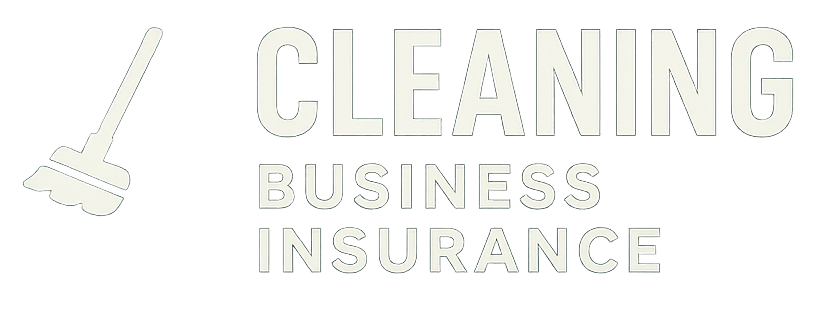Running a cleaning business in California comes with unique risks, especially when employees are constantly on the move—lifting, scrubbing, bending, and working with cleaning agents. Even with strong safety practices, workplace accidents can happen. This is where workers’ compensation insurance steps in, protecting both the employee and the business.
While workers’ compensation is designed to cover medical bills, lost wages, and rehabilitation costs, the number and severity of claims your company files can directly influence your insurance premiums. Understanding how these claims affect long-term insurance rates is essential for any cleaning business owner who wants to remain profitable while staying compliant with California state laws.
Why Workers’ Compensation Claims Matter for Cleaning Businesses
Every time a claim is filed, your insurer evaluates the risk your business presents. For example, if one of your employees suffers a back injury while moving office furniture during a deep clean, the claim costs will be reviewed by the insurance provider. Multiple or costly claims suggest a pattern of risk, which increases your business’s classification as a “higher liability” operation.
For cleaning companies, common workers’ comp claims include slips on wet floors, chemical exposure, repetitive strain injuries, and accidents from handling heavy equipment. Because these incidents are common in the cleaning industry, insurers carefully watch the claim history to assess future risks. Over time, a higher frequency or severity of claims can lead to a significant jump in insurance premiums.
The Experience Modification Rate (EMR) and Its Role
One of the biggest factors that influence your workers’ comp premiums is your Experience Modification Rate (EMR), sometimes referred to as a “mod factor.” This is essentially a score that compares your company’s claims history to other businesses in the same industry.
If your cleaning business files fewer claims and maintains a lower cost per claim compared to industry averages, your EMR will be below 1.0. This translates into lower premiums. On the other hand, frequent or expensive claims raise your EMR above 1.0, which directly increases your insurance costs. Even one severe claim can impact your EMR for years, making it crucial to focus on prevention and safety training.
Long-Term Financial Impact of Claims
The financial impact of workers’ compensation claims goes beyond the immediate medical expenses. A single claim can affect your premium rates for three years or more. For example, if an employee suffers a serious fall that leads to an extended absence, the long-term costs could result in thousands of dollars in additional premiums.
For small cleaning businesses, these costs can be especially challenging. Higher insurance premiums reduce profit margins, limit growth opportunities, and make it harder to compete with companies that have better safety records. In a highly competitive market like California, where cleaning businesses often bid for the same contracts, higher operating costs can directly affect your ability to win new clients.
Preventing Claims Through Safety Practices
The best way to control long-term insurance costs is to reduce the likelihood of claims. For cleaning businesses, this means developing strict safety protocols and ensuring every employee is properly trained. Some effective practices include:
Providing slip-resistant footwear to all employees.
Training staff on safe lifting techniques to prevent back injuries.
Using eco-friendly cleaning products that minimize exposure to toxic chemicals.
Regularly inspecting equipment like vacuums, ladders, and buffers to avoid mechanical accidents.
By demonstrating a commitment to workplace safety, you not only protect your employees but also strengthen your position with insurers. A lower claim frequency makes your business more attractive to insurance providers, potentially lowering rates over time.
Handling Claims Efficiently to Reduce Long-Term Costs
When an injury does occur, how you handle the claim can also influence future premiums. Prompt reporting, accurate documentation, and quick medical treatment all help reduce the severity of claims. For instance, an employee who receives immediate care for a minor injury is less likely to develop long-term complications that result in costly extended claims.
Additionally, maintaining open communication with employees during recovery can encourage faster return-to-work outcomes. Many insurers value businesses that actively manage claims, as it shows you are committed to reducing the overall financial impact of injuries.
Building a Strong Insurance Partnership
Not all insurance providers evaluate claims the same way. Some may penalize businesses more harshly for a single severe claim, while others take into account your overall safety record and risk management efforts. Building a relationship with an insurer who understands the unique challenges of the cleaning industry can make a big difference in how your premiums are calculated.
Consider reviewing your insurance annually to ensure your coverage aligns with your company’s needs. By working with an experienced agent, you can explore policies that provide the right balance of coverage and cost.
The Bottom Line: Managing Risk for Long-Term Savings
Workers’ compensation insurance is a critical part of protecting your cleaning business in California. However, the long-term financial health of your company depends on how well you manage and prevent claims. Each incident has the potential to raise your premiums for years, cutting into your profits and limiting business opportunities.
By focusing on safety training, proactive claim management, and partnering with the right insurer, you can keep your Experience Modification Rate low and maintain affordable insurance premiums. Ultimately, reducing workplace injuries not only saves money but also strengthens your reputation as a responsible and professional cleaning service provider.
